Lush green paddy fields lie blanketed in mist as a faint drizzle sweeps across the landscape. Monsoon clouds surge through the sky, gradually dispersing after a heavy downpour. A chain of lights snakes through narrow pathways beneath the shadows of mango groves beside the paddy fields. They approach a massive boulder, where a shallow cave houses an idol of a tribal goddess—one born from the beliefs, stories, and imagination of the natives, given a physical form, and worshipped, feared, respected, and celebrated.
As the lights advance, their bearers emerge; women of all ages, balancing earthen pots adorned with neem leaves, turmeric, and vermilion upon their heads. Vibrant silk sarees ripple with each step, their gold and glass bangles jingling, while silver anklets (decorated with tiny metallic bells) chime in rhythmic harmony as they carefully navigate the narrow paths between the paddy fields.
Leading them is a fierce, potbellied man, his body drenched in turmeric and vermilion, his ferocious gaze alive with intensity. A long whip cracks in his hands, punctuating the air as he dances to the thunderous drums reverberating across the village. Behind him, garlanded goats and sheep, draped in neem leaves, are dragged toward the boulder, soon to become sacrificial offerings to the tribal goddess.
* * *
Whispers of Dawn
On a winter morning, nine majestic palm trees (one of the signature views of the village) stand united against a distant mountain, their silhouettes etched against the first rays of sunlight piercing through the mist. A soft golden glow filters through the haze, as dust rises from herds of cows and buffaloes, their warm breath billowing into the air like fire-breathing dragons. Village boys dart across the fields, racing to collect droppings before they touch the ground.
Nearby, elderly villagers, wrapped in thick cape blankets, sit gathered by a crackling campfire, smoke curling from their chuttas (homemade cigars). Their voices rise and fall, their stories drenched in wisdom passed down through generations. Crowing roosters awaken the rest of the village, their echos merging with the distant hum of morning activity.
Across the dew-laden fields, tiny droplets cling to blades of grass, glistening like scattered jewels, silent witnesses to generations who found solace within this land.
* * *
The Eternal Communion of Fire and Fellowship
On a spring afternoon, the outskirts of the village shimmer with the fiery brilliance of Palash trees, their beak-shaped, reddish-orange flowers blazing in the sunlight. In a small clearing by the toddy palm trees, villagers gather, savoring fresh palm wine poured into funnels made from native Palash leaves. The toddy pickers, their hands hardened by years of labor, tip earthen pots, releasing the most cherished drink, collected straight from the palm sap.
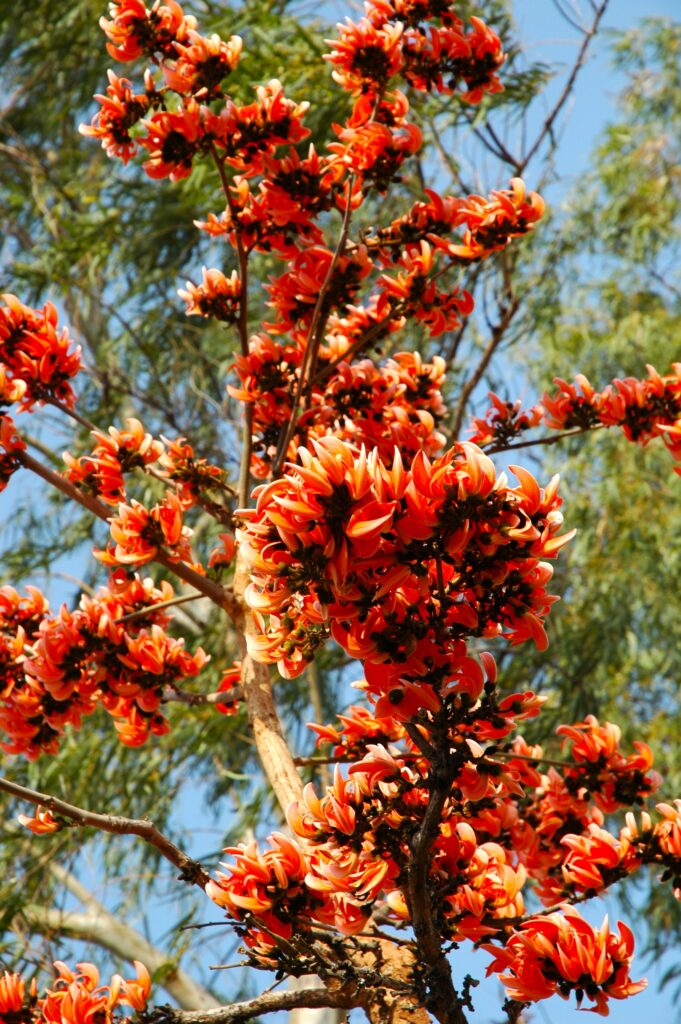
A Palash tree in bloom.
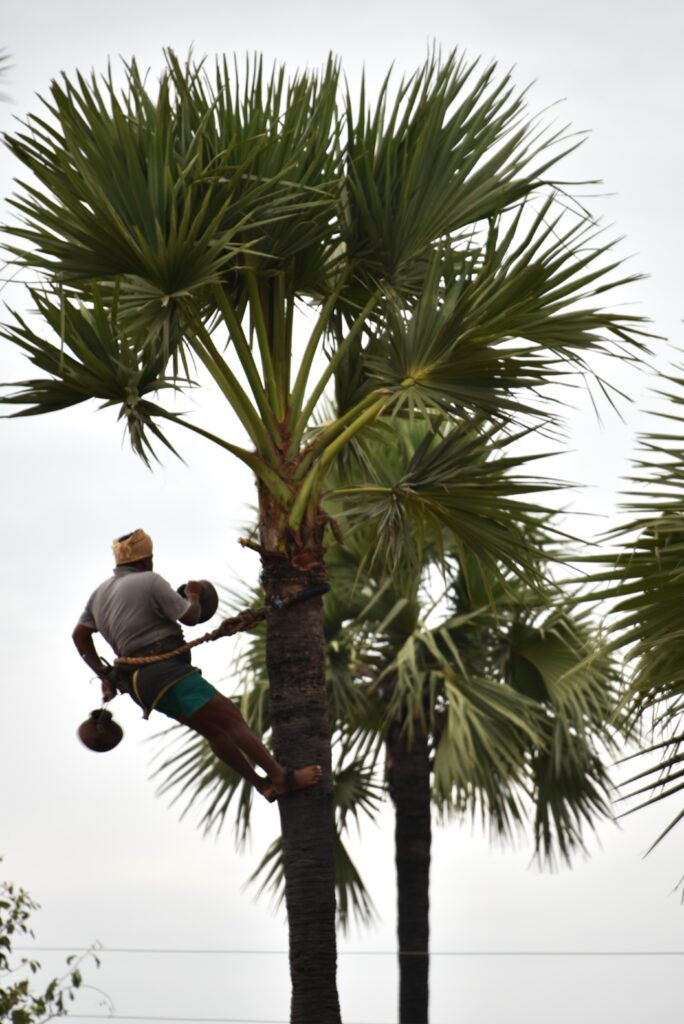
As the sun dips lower, the pickers settle in, watching in quiet amusement as their guests surrender to the ritual of shared memories. Voices rise and fall in heated debates, weaving through politics, real estate, cricket, movies, affairs, and philosophy; sometimes harmonizing, often clashing. Tempers flare like fiery Palash flowers, fists fly, and if fate allows, a few brawls erupt, only to be interrupted by loyal companions, stepping in to mend bruised egos.
What follows is an unraveling of emotions as old as time. Once-feuding friends are now drenched in sentimentality, whispering apologies, leaning on each other’s shoulders, their emotions spilling like the very wine they had savored. With slurred promises and wistful farewells, they part ways, knowing they will return, time and again, to this sacred dance of camaraderie, nostalgia, and raw humanity.
* * *
Shimmering Night Skies and Legends
Before electricity reached my village, summer nights transformed into boundless celestial retreats, where every evening was an open-air camping experience beneath the Milky Way’s luminous embrace. People slept under vast canopies, gazing upon the unfettered brilliance of the stars, their visions so dazzling that they slipped effortlessly into the bedtime stories of elders.
At times, the Milky Way was a silver river of the cosmos becoming the Ganges descending from the heavens. Other times, it transformed into a diamond-studded baldric, a celestial adornment for the gods in their eternal battle against demons. And when time came to delve into our existence, the Milky Way became an arch of the heavens, separating the mortal realm from the divine.
Shooting stars and meteor showers pierced the stillness, their fleeting streaks adding dynamism to the composed star-studded skies. Beneath this celestial theater, the cold breeze rustled the banyan and neem trees, oozing a white noise, while crickets provided a chorus, and distant coyote howls added drama to the night’s opera.
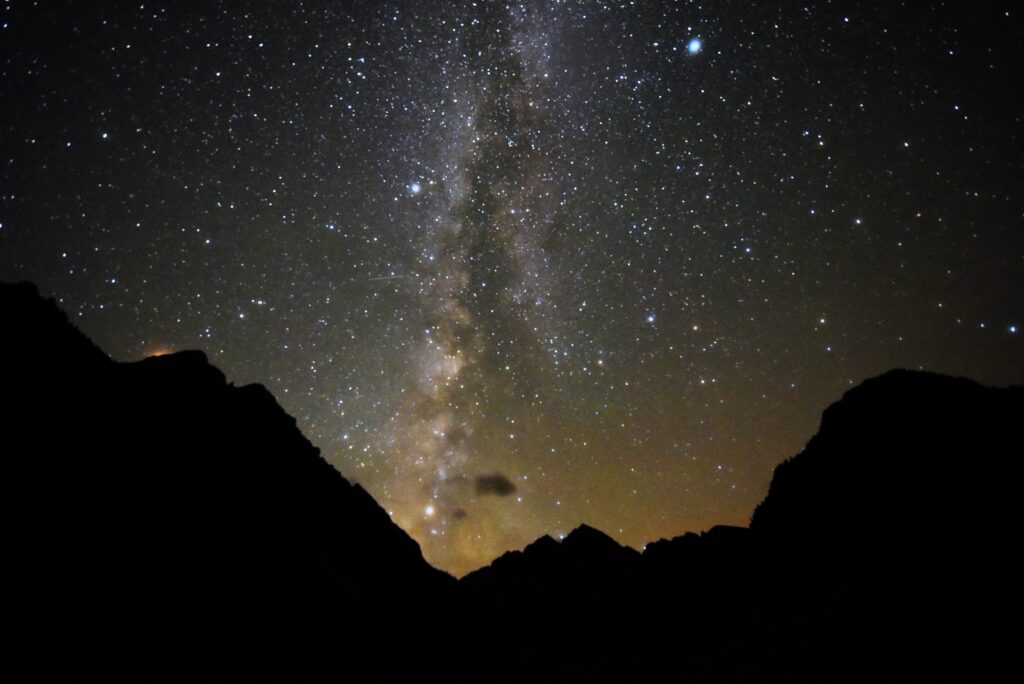
Milky Way.
* * *
A Village Rekindling Its Legacy
Like many villages, my village has borne the brunt of ‘Razakar’ atrocities, feudal oppression, and the ‘Patelgiri’ system during both the pre- and post-independence eras. Yet, it has gradually begun its quest to reclaim its past glory, one rooted in the rich heritage of the Kakatiya period (1163–1323 AD).
It is nestled between two man-made lakes, anchoring either end, alongside two old temples, positioned in the northeast and southwest corners. These centuries-old temples, crafted during the Kakatiya reign, stand as spiritual beacons, shaping the faith and traditions of the village.
A few kilometers to the east lies the sleeping giant of a mountain, its towering silhouette casting the first rays of sunlight upon the village every morning. With each dawn, as mist rises from the ancient waters and as temple bells echo through the air, my village continues its quiet resurgence, embracing both its past and the promise of its future.
* * *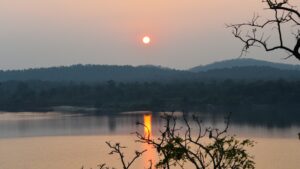
The Enduring Spirit of the Village
As years passed, the hump of the mountain gradually sank, its shoulders mined, chiseled away by time and ambition. Tar roads slithered into the village, stretching from distant lands, ushering in new goods and unfamiliar habits. Electricity and communication cables coiled through the settlement, gavage-feeding it with etiquette, knowledge, and innovation—yet hidden in the currents, restlessness, confusion, and greed crept in, uninvited intrusions into the quiet rhythm of life.
For centuries, a massive banyan tree had stood guard over one of the temples, its expansive canopy a refuge for annual carnivals, its roots tangled in the fabric of tradition. But as change unfurled across the village, the ancient tree succumbed to sorrow, dissolving into the earth, unable to bear the weight of transformation. Concrete monuments emerged, casting long shadows over what was once a sacred confluence of landscape and innocence.
Yes, change is the only constant, shaping and reshaping civilizations over roughly 2,500 generations since the first humans walked out of Africa, carrying the spirit of exploration to the farthest corners of the earth. Intellectual curiosity, defiance of stagnation, survival instincts, and the quest for meaning have propelled humanity forward, ascending the rungs of the evolutionary ladder—from hunter-gatherers to villages, chiefdoms, kingdoms, and, ultimately, states.
While it took us a million years to progress from mastering fire to discovering gravity, within a mere two centuries, we catapulted from harnessing the power of steam to building human-like robots and making the dead speak to us live using AI. The pace of change is now beyond exponential—though it must be regulated and controlled.
But I digress!
Everyone who leaves their village carries a fragment of it within their heart, leaving behind a piece of themselves in return. Whether they step into politics, law, medicine, engineering, literature, or business, or stand at the borders defending their homeland, they weave their village’s legacy into distant landscapes, imprinting each new place with echoes of the past—making it familiar, comforting, and alive with memory.
As they pray for the steady progress of their village, one selfish desire always lingers—that somewhere within the village, tranquility, purity, and innocence remain untouched, preserved as a sanctuary, a place to return to when the weight of the world grows too heavy. They pray that their village will retain its resilience, guard itself against reckless change, and stand unshaken in its integrity—re-emerging, not as something unrecognizable, but as the true beacon of human spirit.
Photos Credit: Amar Veluri

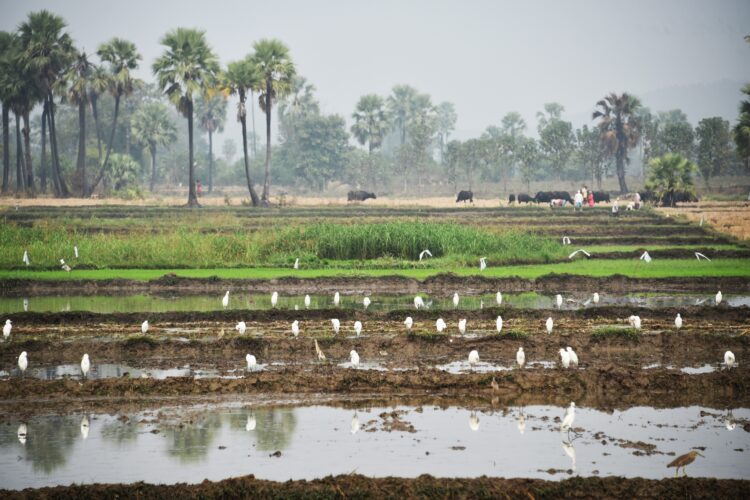







Beautiful ode to the village memories, recollection of those days and the longing deep down to relive them.
Very nostalgic. Such a beautiful writing and the pictures are breathtaking.
Thanks Sandhya
So Beautifully written Amar, each word in the above article took me back to my childhood memories of a village life I spent way back for just a week. Your writing style felt so unique and the combination of your amazing pics to complement were so engaging that I could visualize once again living those moments, sleeping under the palm trees, seeing the sky closer then usual with millions of stars above me, hearing the morning rooster wake me up and much more. Hope all can take themselves back to a village life in an instant by just reading your write up and be filled with its serenity. Excellent work!
Thanks Rashmi
Beautiful and genuinely moving writing.. captures soul of village life and the relationship between place, memory, and identity.
The imagery is extraordinary – from the “chain of lights snaking through narrow pathways” to the “diamond-studded baldric” of the Milky Way. The writing engages all the senses, making readers feel present in each scene.
Thanks Ramana
Amar, nicely written and soul touching for someone who is from a village. For me, it was an article that gave me a glimpse of an inner person traveling to find ‘who is’ between the green paddy fields, the milky way, and the mountains along the way. I have never been in a village. Grew up in a big city. Man, this was probably your best!!!
Thanks Anand
Excellent description of your village with beautiful images to complement. Even without any images, your detailed description has put my brain’s imaginative power to work. Thanks for sharing. Great writings always create everlasting images in our memory. Your narration don’t need any photographs. Keep writing!👌👌
Thanks Krishna
Your words deeply capture that quiet wish—that our village stays the same, no matter how far we go. Truly moving and meaningful.
Thanks Ravi
Thanks Ravi N
Excellent article with jaw dropping pictures
Thanks Kiran
The keen eye for detail made the village and its people so vivid. Excellent work, Amar!
Thanks Reena
Heart touching portray of good old village which is similar to many more wrapped with nostalgic memories in the hearts of most. This is an exquisite piece of description of roots of most of us who are connected with ingenuous rural life. Author of this piece seems to be a great writer of reality entangled with the warmth of connection to his origin. Thoroughly enjoyed every word of this writing.
Thanks Yogi
Your story has transported me right into that village, I felt like I was there. Keep writing more!
Thanks Vikki
Dear Amar, I finished reading your incredible article, and I must say, it struck me right at the core of my heart. Your evocative descriptions and vivid imagery transported me back to my own village, awakening memories I hadn’t revisited in years. From the misty paddy fields to the rhythmic jingling of anklets and the soulful echoes of the drums, every word seemed to carry me home.
The way you painted the scenes of tradition and dawn reminded me of early mornings by the fire, listening to stories from my elders, and the simple joys of life that often get lost in the rush of the world. It is rare to find writing that not only tells a story but also breathes life into it, and you’ve done just that.
Thank you for crafting something so beautiful and nostalgic. It’s a piece I will cherish and revisit whenever I want to feel that connection to my roots again. 🙏
Thanks Veer for such a heart-touching review.
Amar , Nicely written about the glimpses of village , made me very nostalgic after reading . I could relate to each and every word and meaning behind the expression . Amar you have really got me from reader’s perspective excellent way to describe various aspects together from a village. Really enjoyed your writing skills . Well done Bro!
Thanks buddy!
Thanks Sridhar!
Dear Bro, i just wanted to say how much I loved the beautiful phrases you wrote about our village .Your words perfectly captured the soul & charm of our roots…every line felt like a walk through our fields, traditions,and memories.It really made me feel proud, nostalgic and deeply connected.Your talent and love for our place truly shine through.Keep writing- Your words matters.
Thanks Arun